Tropical plants such as cannas, elephant ears, and caladium have underground structures called tubers, which can be dug up and successfully over wintered, then replanted in the spring.
Palms, Mandeville and hibiscus can be brought indoors to a sunny location or put into a greenhouse.
With Bananas, depending on your climate, you have some different options.
I will share with you here how I over winter my tropical plants.
Supplies & Tools Needed:
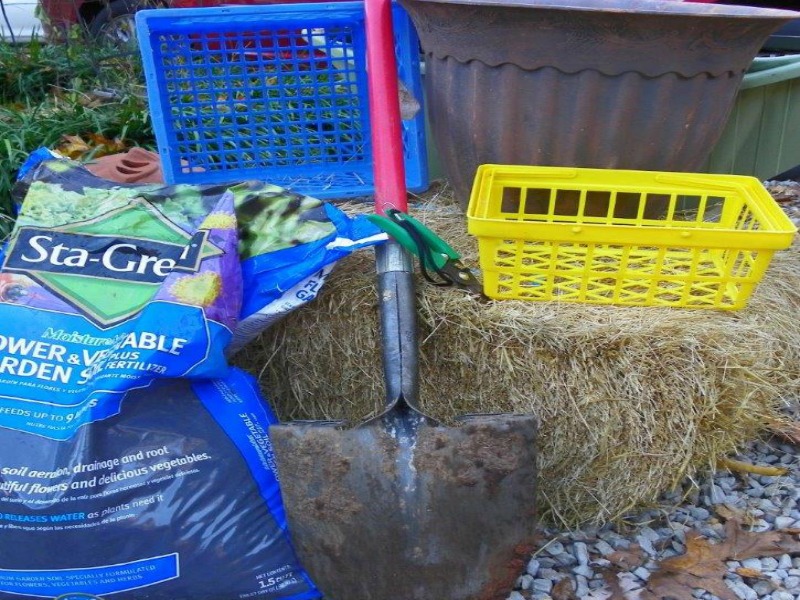
Shovel
Clippers or knife
Straw or pine shavings
Basket
Clay or plastic pots
Potting soil
Tubers- Cannas, Elephant Ears, Caladiums Etc:
Step 1: Let Plants Go Dormant
The best time to dig up your cannas, elephant ears or caladium is right after the first light frost, this is when the leaves have turned a little brown and it puts the plant into dormancy.
Step 2: Digging up the Tubers
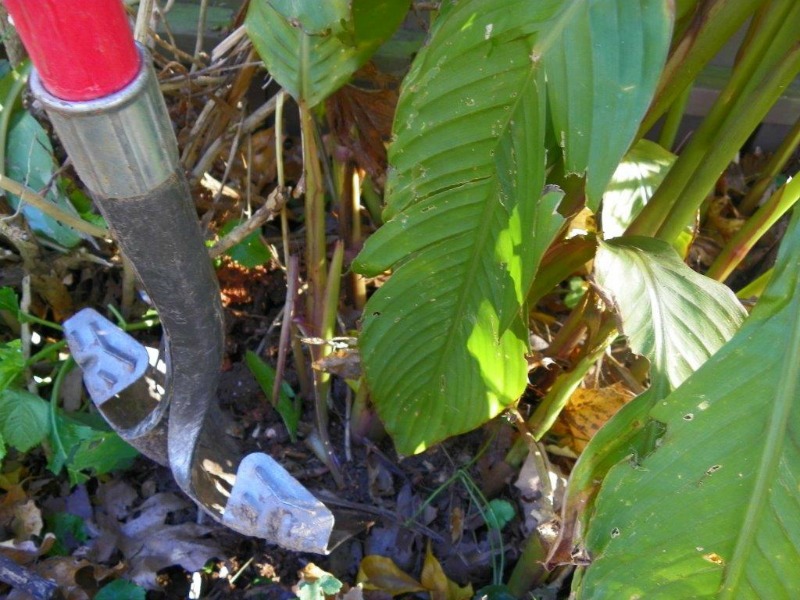
Dig up the tubers. Here I am digging up my cannas. (Note: This is also a good time to separate or break up your tubers in order to have additional plants next season)
Step 3: Allowing The Tubers To Dry Out
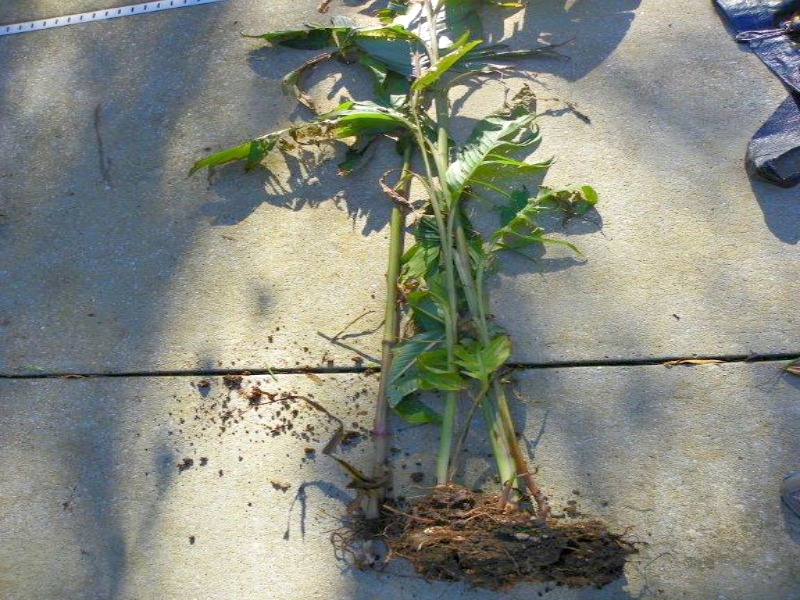
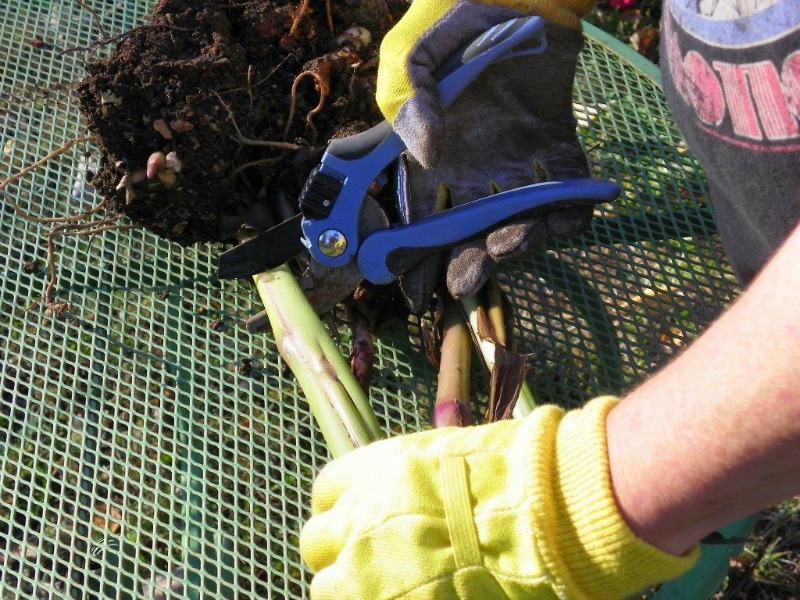
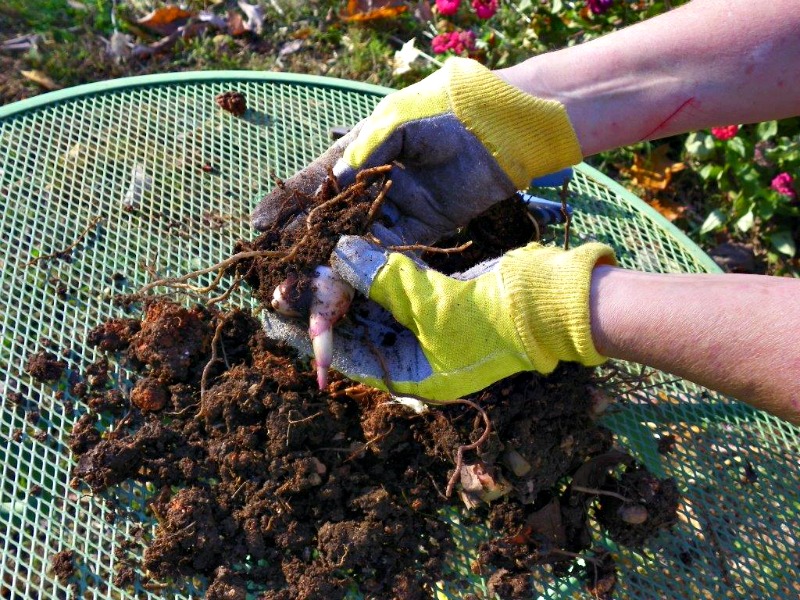 Clean the soil off the tubers and set them out to dry for a day or two.
Clean the soil off the tubers and set them out to dry for a day or two.

Step 4: Storing The Tubers
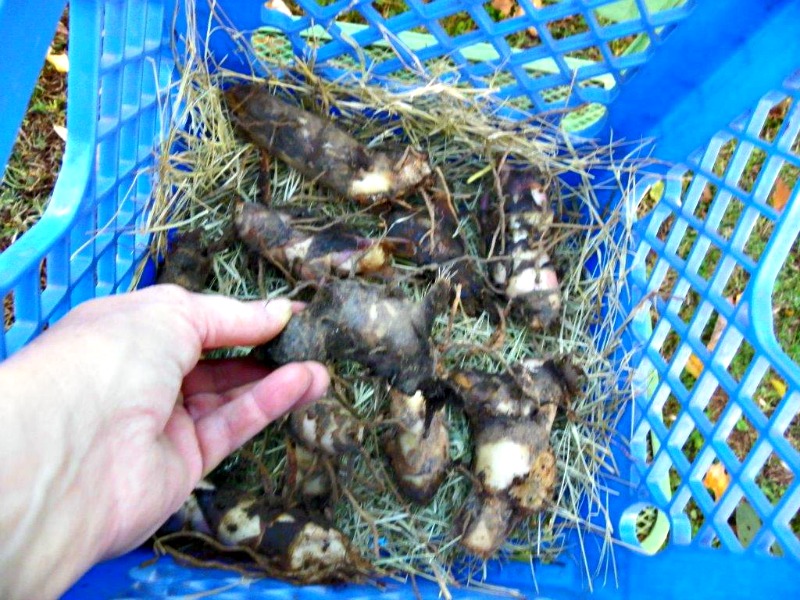
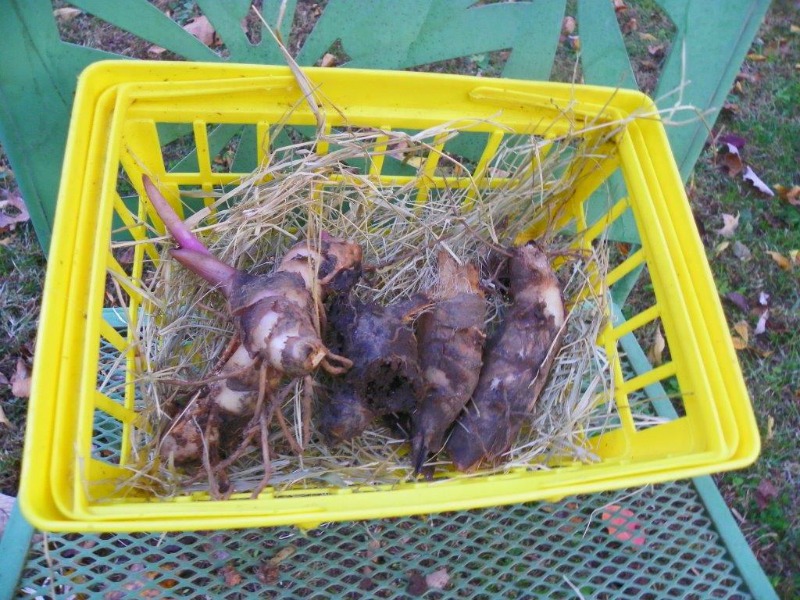 Once the tubers have thoroughly dried out, place them in well-vented containers or baskets lined with pine shavings, or straw. Bread and milk crates work well. When storing the tubers, put them in a cool dark place that is about 50-60 degrees.
Once the tubers have thoroughly dried out, place them in well-vented containers or baskets lined with pine shavings, or straw. Bread and milk crates work well. When storing the tubers, put them in a cool dark place that is about 50-60 degrees.
Basements and cellars are great places to store these over the winter.
Check the tubers monthly to see if any have rotted or are shriveling up. Throw away any rotting ones and use a sprayer/mister water bottle to lightly mist those that are shriveled.
Step 1: Relocate Palms, Mandeville and Hibiscus
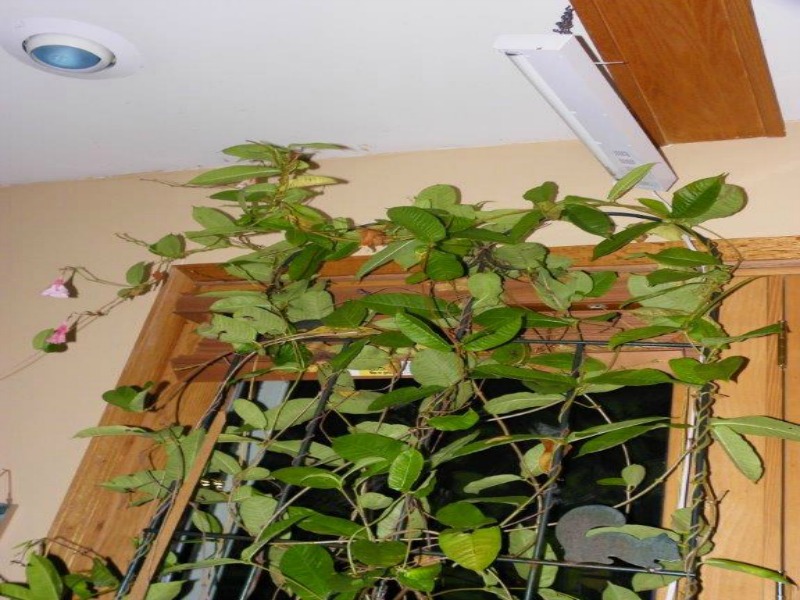 If you have a sunroom, or a greenhouse this is the best place to put these plants for the winter. If you don’t have either of these then the next best place is in front of or around windows.
If you have a sunroom, or a greenhouse this is the best place to put these plants for the winter. If you don’t have either of these then the next best place is in front of or around windows.
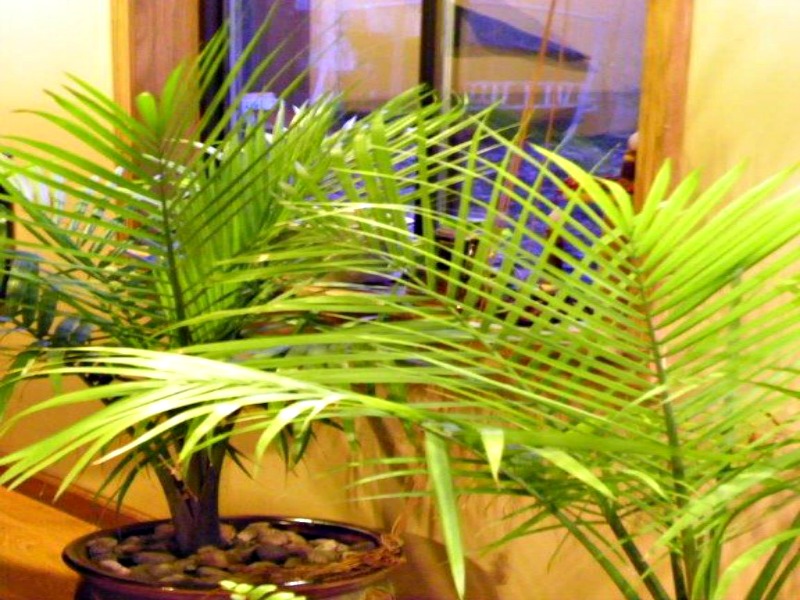 Palms do not require as much light as Mandeville and hibiscus so they can be around windows.
Palms do not require as much light as Mandeville and hibiscus so they can be around windows. 
 Mandeville and Hibiscus require much more light, so they need to be placed directly in front of windows or glass doors that get a lot of sun. I place my larger Mandeville, trellis and all in front of my glass door.
Mandeville and Hibiscus require much more light, so they need to be placed directly in front of windows or glass doors that get a lot of sun. I place my larger Mandeville, trellis and all in front of my glass door.
Step 2: (Optional) Add A Grow Light
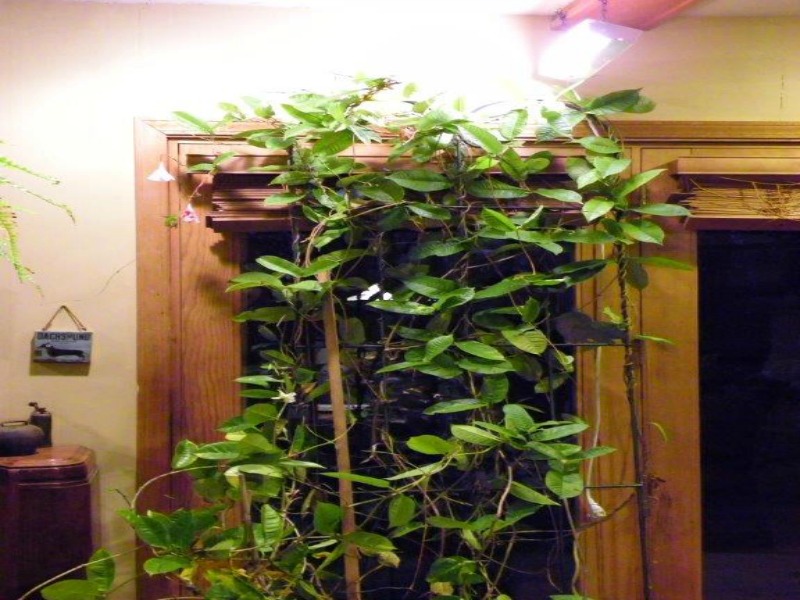
I have discovered over the last few years that even though my windows face the bright-west sun, it still isn’t enough bright light for the Mandeville, or Hibiscus, they require at least 12 hours of bright light. Now when I bring the plants in I change out my regular light bulbs in my can-lighting fixtures, located right above the plants for grow-light bulbs.
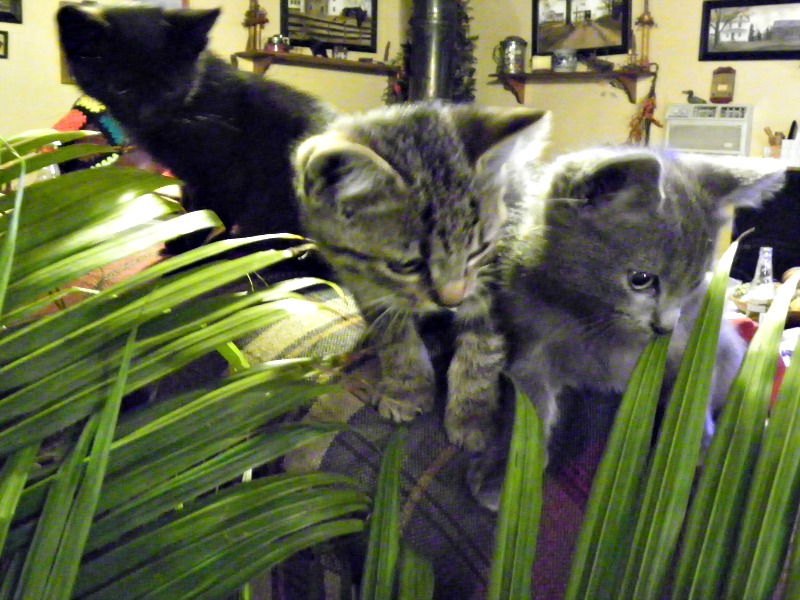 Special Note: For the first few months Mandeville and hibiscus, will drop leaves as they adapt to their new environment.
Special Note: For the first few months Mandeville and hibiscus, will drop leaves as they adapt to their new environment.
Maintaining palms, Mandeville and hibiscus while indoors:
Water these plants regularly but keep on the dry side. These plants like humidity so mist them often, or put a pan of water between them.
Another way to provide the humidity these plants require is to run a humidifier.
Overwintering Banana Plants
Here you have two options depending on your climate. In East Tennessee where the winters normally do not get too cold, bananas can be left outdoors. In more colder climates, it is best to dig up your banana and store it inside:
Option A: Leaving Banana Plant/Tree Outside In The Garden
Step 1: Allow the Banana Plant/Tree To Go Dormant
Leave the banana in the ground until just after the first light frost.
This will allow the plant to go into dormancy.
Step 2: Cut Back The Banana
 Cut the plant down leaving about 10-12 inches of stalk.
Cut the plant down leaving about 10-12 inches of stalk.
Step 3: Mulch and Cover
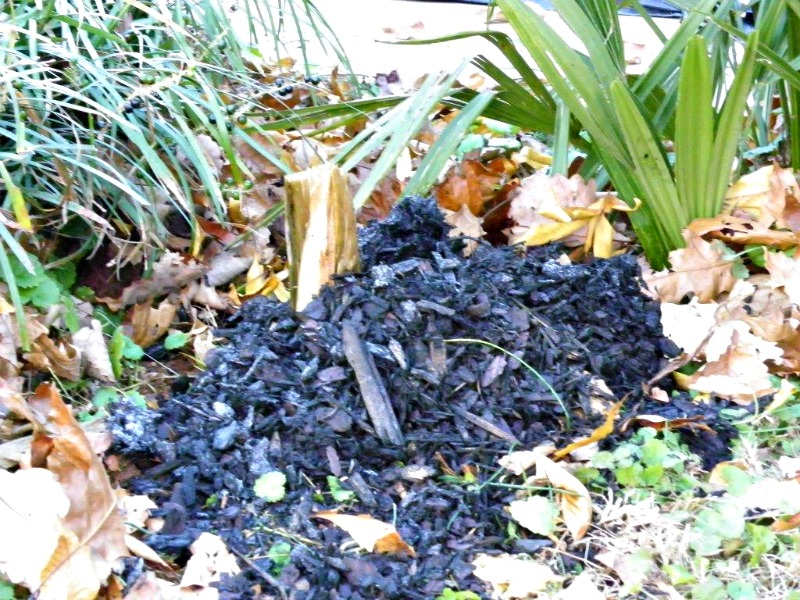 Once you have cut back the banana plant, cover it with at least a
Once you have cut back the banana plant, cover it with at least a
12-inch layer of mulch.

Option B: Bringing Banana plant indoors
Just before the first frost bring your banana plant/tree indoors or put in a green house.
Step 1: Digging Up The Banana Plant/Tree
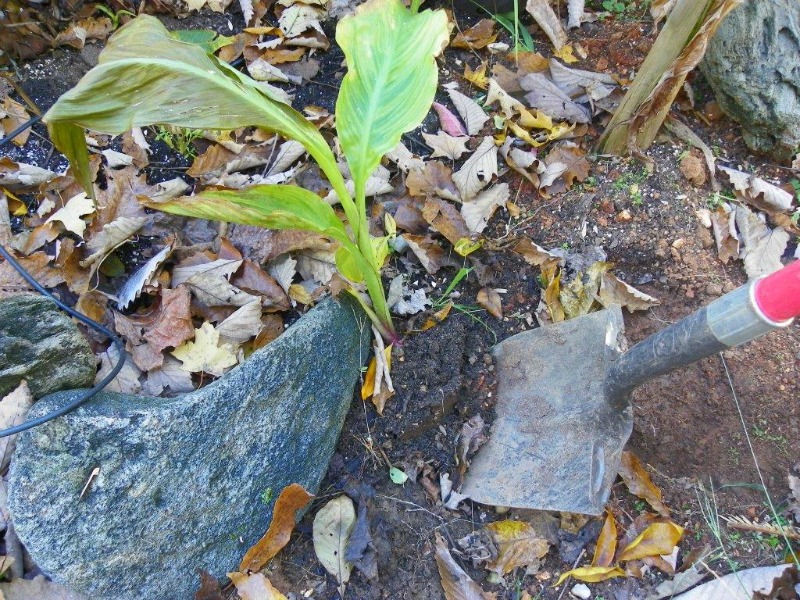 Using a shovel to dig up the banana being careful not to damage the roots.
Using a shovel to dig up the banana being careful not to damage the roots.
Step 2: Replanting the Banana Plant/Tree
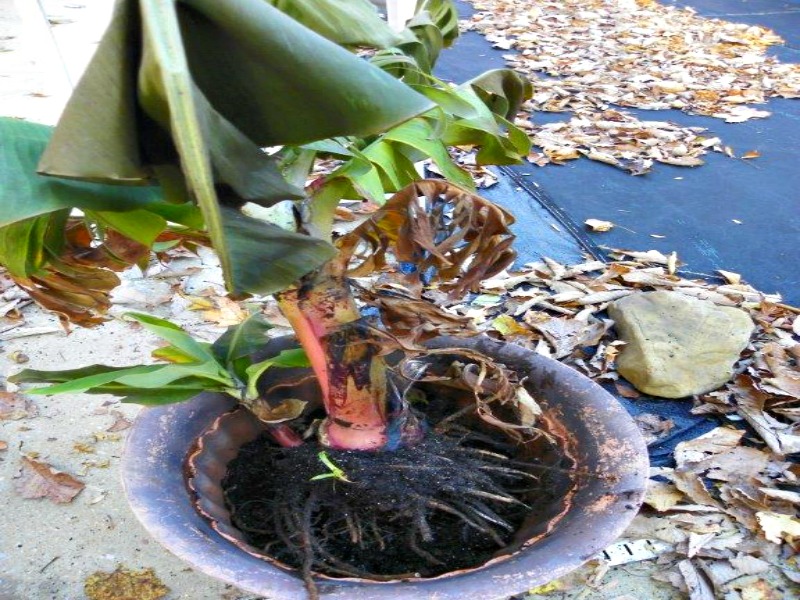 Place the banana into a pot and cover the roots with potting soil.
Place the banana into a pot and cover the roots with potting soil.
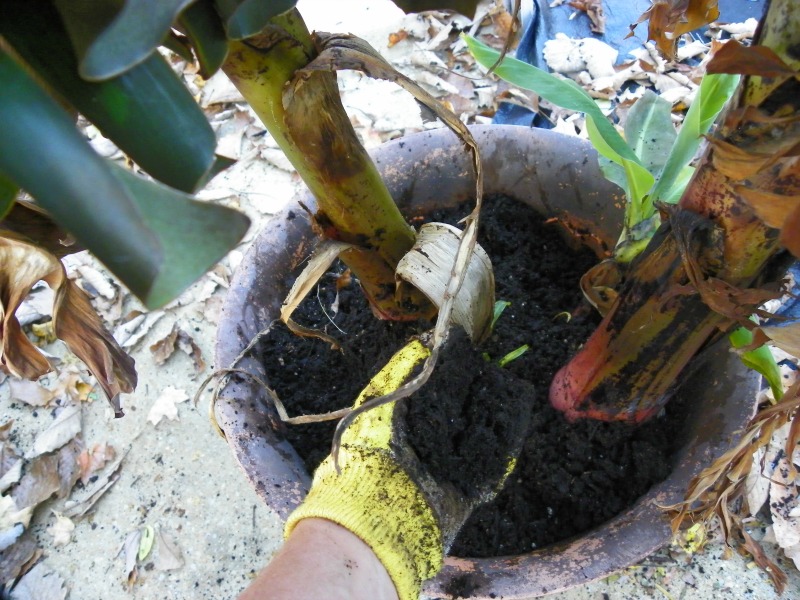 At this point you have two choices you can choose to grow your banana as a houseplant during the winter if it is not too big and you have the space, or you can let it go into dormancy.
At this point you have two choices you can choose to grow your banana as a houseplant during the winter if it is not too big and you have the space, or you can let it go into dormancy.
Step 4: Preparing The Banana For Dormancy
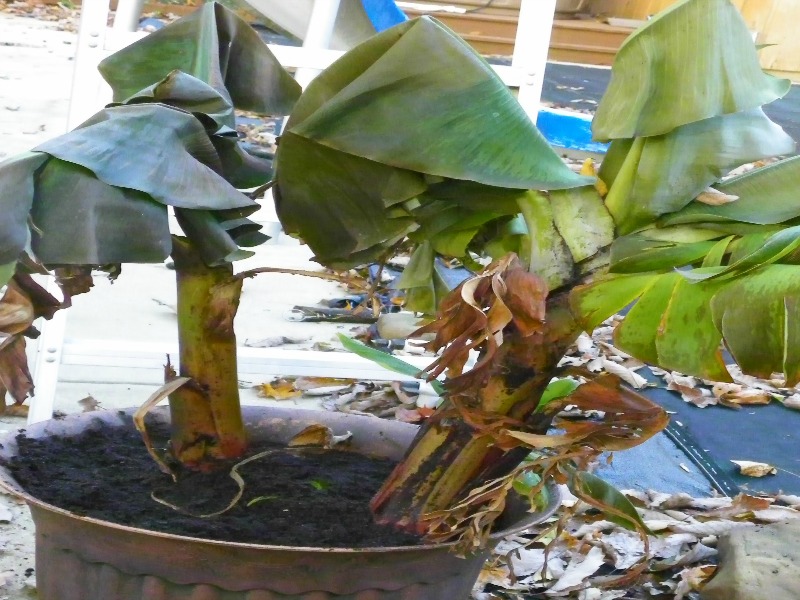 If you choose dormancy, don’t bring your banana in until just after the first LIGHT frost. This will put the plant into dormancy.
If you choose dormancy, don’t bring your banana in until just after the first LIGHT frost. This will put the plant into dormancy.
Step 5: Cutting Back The Leaves
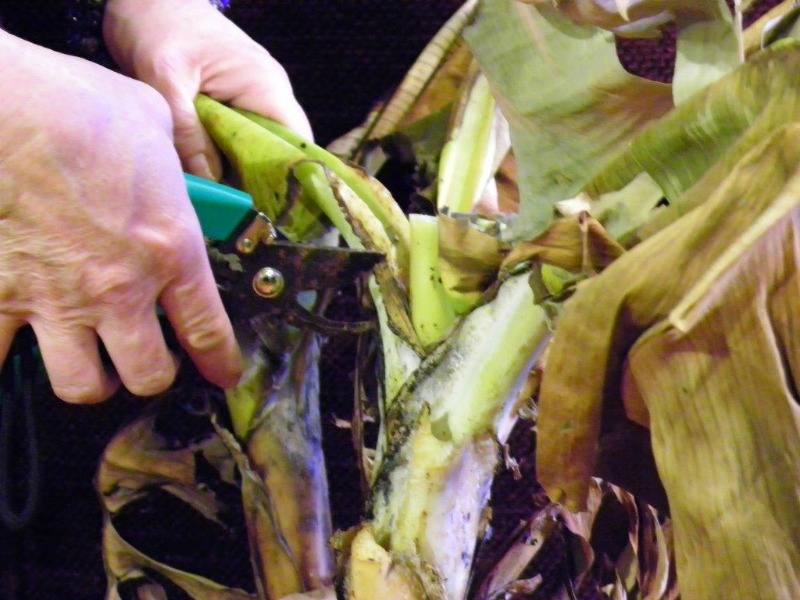 After the leaves have turned a bit brown from the light frost, cut them back to the trunk.
After the leaves have turned a bit brown from the light frost, cut them back to the trunk.

Place the banana in a dark, cool (40 – 45 degrees) place such as a basement or cellar for the winter. Go ahead and let the banana stay on the dry side..
About The Author:
Debbie Russell works as a special event coordinator for a parks and recreation department in Tennessee, but also utilizes her life long experience in gardening and landscaping creating beautiful beds and gardens for the parks. When not a work, she is at home landscaping and gardening her seven acres. She raises chickens, and enjoys crafting and quilting.
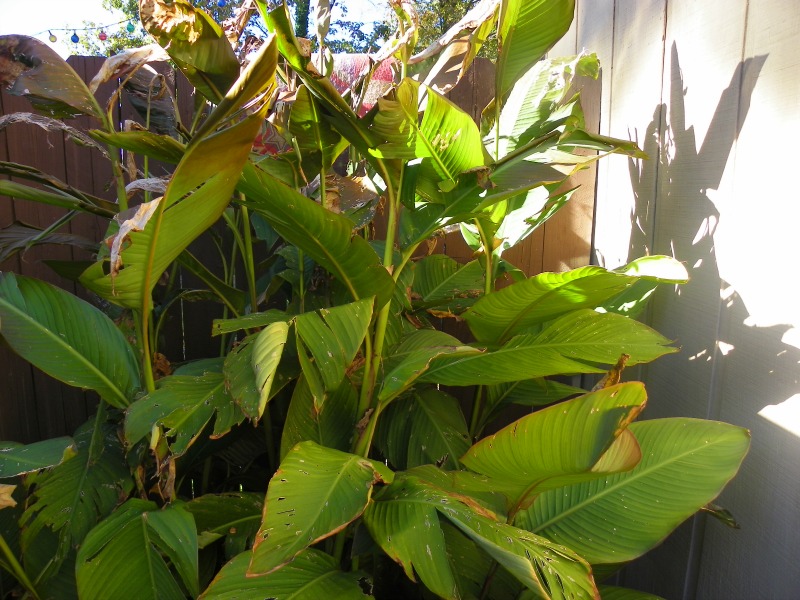

Edward,
I’m in north, I have no idea where to get a banana tree, but I’m sure there are plenty of place online that can help you out. We have a lot of growers in warm zones, I’m sure of them have them.
you can get them from Walmart or even on amazon for 39,99. do you want red or blue java both are on the sites for sale. I’m even thinking of getting one or two for my place.
Seriously how can I purchase the Japanese red maple if you do not ship? When I first look at your site I felt like I finally found a friend and someone I could count on for real answers but now I understand that you are a busy person with lots os things to take care of. Anyway your answers and information looks good and helpful and am happy to have found found your page and will visit it often. Good luck and Thanks again.
Louie, There are all kinds of places online where you can purchase Japanese maples. Most don’t offer the kind of helpful information that I do, but they are in the business of selling plants online. That’s just not something that I do at this time. If you have a keen interest in Japanese maples you should spend some time on my Japanese maple site, lots of great info there. http://japanesemaplelovers.com/